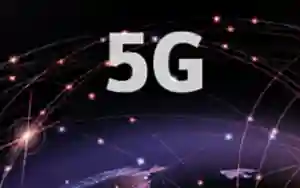 Although superfast broadband (5G Fwa) – with a download speed of at least 30Mbps – is by now widely available, the demand for services that use ever-higher volumes of data with equal availability and reliable connectivity is steadily increasing. This has been highlighted by the COVID pandemic and the shift towards working from home.
Although superfast broadband (5G Fwa) – with a download speed of at least 30Mbps – is by now widely available, the demand for services that use ever-higher volumes of data with equal availability and reliable connectivity is steadily increasing. This has been highlighted by the COVID pandemic and the shift towards working from home.
In response, governments around the world have been establishing policies and pledging funds to accelerate high-performance network infrastructure deployments. In 2018, for example, the UK government introduced its ‘Future telecoms infrastructure review’ with a target to deliver a nationwide full-fiber broadband network by 2033.
From full-fiber broadband to gigabit broadband
In 2019, the Johnson government’s election manifesto accelerated this target to one of ‘delivering nationwide gigabit broadband by 2025’. This was later reduced to a less ambitious rollout target, but the interesting point is the change of terminology – from ‘full-fiber broadband’ to ‘gigabit broadband’. The approach had become technology-agnostic, acknowledging that both 5G wireless technology and fiber are tools for bringing premises around the UK into a gigabit infrastructure – the highest performance available. In other words, with 5G, wireless becomes a serious contender to fiber.
This reflects the challenge facing network installers upgrading to gigabit capability. Existing superfast broadband is mostly delivered by Fiber To The Cabinet (FTTC) technology. Network traffic travels along fiber cables from a local exchange to a street cabinet, and then through pre-existing copper telephone cables to individual premises. Network speed decreases with increasing cabinet – premises distance, because of signal degradation along the copper cable. This issue becomes more critical as network performance capability increases.
This ‘last mile’ connection problem can be solved by a full fiber – or fiber to the premises (FTTP) installation, where the fiber cable extends from the exchange right through to the user premises. Alternatively a ‘last mile’ wireless solution, based on 5G FWA, can be used. But which approach is best? Below, we look at the factors that decide this, and also see how wireless and fiber can also be used together to achieve network resiliency for enterprises.
One immediate problem for fiber is the cost of installing it. Digging ground for, and inserting fiber cables is arduous and expensive; this expense is easy to justify in a densely-populated area, but less so in a sparsely-populated rural location with fewer potential customers.
Rural areas can also present other challenges to fiber, many of which are environmental. Fiber cabling can require large stretches of unobstructed land between connections, so installation will require permission from local councils and private landowners. This can mean lengthy delays and costs before installation even starts.
These scenarios are unfortunate for businesses who wish to establish branch offices in rural locations for either commercial or logistics considerations. They will face elevated costs from network providers seeking to recover their cable investment, as well as the expense of connecting the fiber to their customer premise equipment. Worse, the network provider may simply decide not to invest in or offer a fiber connection at all.
The simplicity of 5G FWA installations
By contrast, 5G connectivity can be provided far more easily. A 5G infrastructure can start with a single solid connection to a fiber street cabinet or other aggregation node, and be implemented with numbers of small, easily-installed base stations distributed around street furniture and on top of buildings. They can be strategically placed to avoid major disruptions such as forests or valleys, and leave protected areas undisturbed while establishing uninterrupted connectivity.
While 5G eliminates the civil engineering installation and materials costs of fiber, users can also integrate it far more cheaply and easily. They can set it up themselves with a plug and play router provided by the network company, rather than needing an installation engineer’s visit.
However, while capital expenditure for 5G is less than for fiber, operating expenditure is more, due to factors like electrical usage and maintenance costs. Yet this is mitigated by a further consideration, because any investment into 5G benefits more than just 5G FWA. The infrastructure that 5G FWA uses, from the small cells to the larger masts, can also be employed by 5G mobile networks. This gives operators an opportunity to amortize their costs more broadly.
5G FWA performance enables a wide range of applications
But 5G FWA vs fiber is not just about cost. Unlike earlier wireless iterations – even 4G/LTE – 5G FWA offers a performance to compete with or exceed that of fiber. Businesses can now benefit from operating outside of expensive, highly built-up urban areas even if they are involved with high data throughput applications like augmented reality (AR) or virtual reality (VR). 5G can also manage high-risk industrial IoT applications like connected facilities maintenance or a smart factory, where failure to function may have costly or dangerous implications for stakeholders and employees.
Because 5G FWA, in particular the 60GHz band, is capable of super-low latency gigabit speeds, it offers a great solution for large-scale IoT projects. These solutions are ideal for manufacturing or farming IoT applications far away from even the nearest fiber point of presence. In areas where fiber is not yet present and is unlikely to ever be available, 5G FWA can be deployed quickly to grant equal access to gigabit speed connectivity for everyone, everywhere.
5G FWA’s rapid deployment, ubiquitous presence and easy provisioning means that many business users will find it attractive even if they are located in cities where fiber could also be available. In April 2021, for example, Verizon launched a 5G FWA service for business customers in 24 cities based on its high speed mmWave network – 5G Ultra-Wideband. It positions this service as a cable alternative.
Wireless can similarly be more attractive than fiber in many other applications – for example, large retailers with many distributed sites, POS solutions, popup stores, and networks in rail rolling stock and other vehicles. Temporary sites like music festivals, sports events and construction sites also benefit from a quick installation with no civil engineering requirement.
Achieving WAN resilience
Yet 5G FWA and fiber (or copper) can come together for high end businesses like banks, where 24/7 uninterrupted connectivity is essential. A typical office installation will already be up and running on a cabled connection; resiliency can seamlessly be added by providing a backup 5G FWA link in parallel with the cable connection. The wireless connection will not only be lower cost, simpler and quicker to install than a second cable, but will be immune to common-mode problems – like accidental damage from an excavation – that could affect a cable pair.
Teldat is well-positioned to help customers on both sides of the 5G FWA vs fiber scenario, with a wide range of cabled WAN routers, as well as 5G-enabled devices. The Teldat M8Smart corporate edge router has both fiber and 5G connectivity, while the Teldat-5Ge unobtrusively adds 5G communications to routers that are without such built-in connectivity or have poor reception.


























